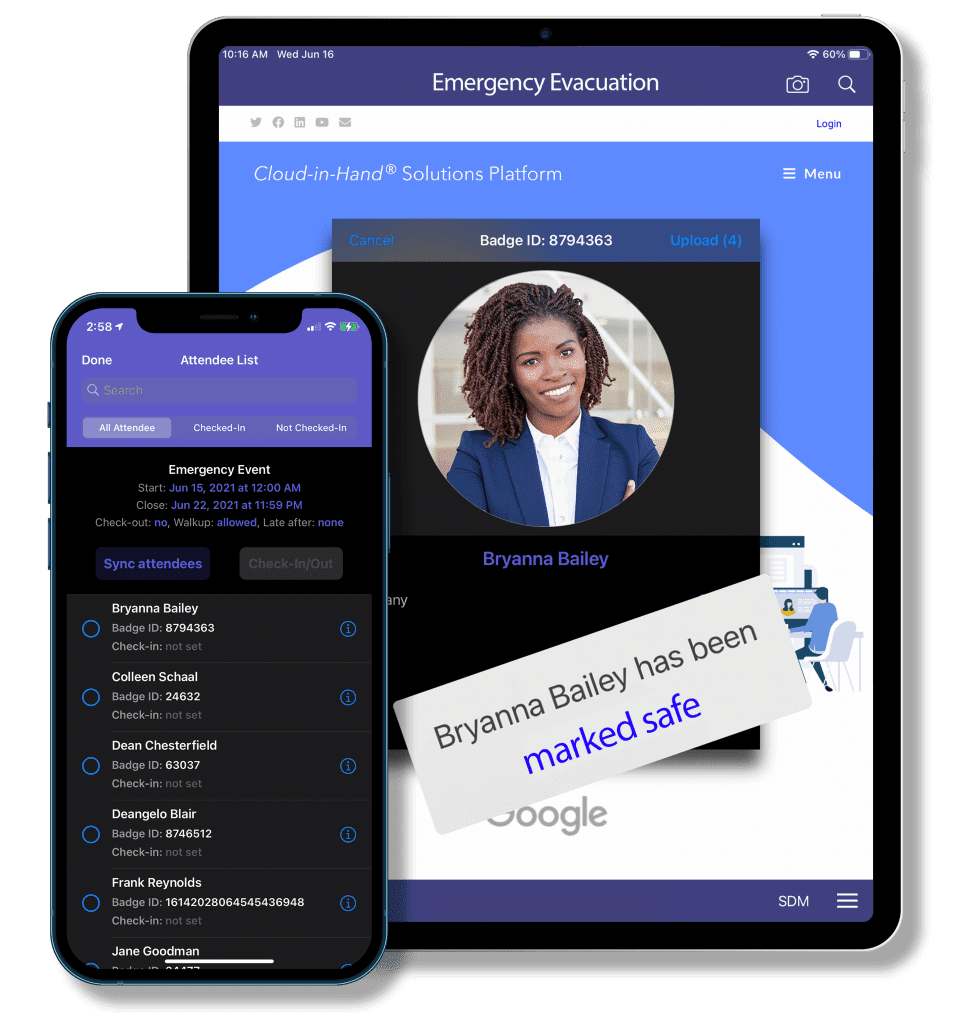The Role of SMS Alerts and Electronic Rosters in Emergency Plans

On a typical Tuesday afternoon, an equipment failure at a large chemical manufacturing plant releases toxic gas, setting off alarms throughout the facility. With over 100 employees, you begin to wonder if everyone is aware of the incident and if all employees have made it to safety. In the midst of chaos, the effectiveness of your emergency communication system faces the ultimate test.
This scenario underscores the critical need for robust emergency preparedness tools. Integrating tools such as SMS emergency alerts and electronic rosters into your plan is paramount. These tools ensure swift notification and accountability, crucial for facilities with a large number of employees.
In this blog, we explore how SMS alerts and electronic rosters play pivotal roles in emergency plans. These technologies can significantly improve emergency management, potentially saving lives and minimizing harm.
What is an Electronic Roster?

An electronic roster is a digital version of a traditional employee roster. It is a system used to manage and track employee attendance, time, and other related aspects within an organization. Unlike paper-based systems, electronic rosters leverage technology to provide real-time updates and streamline the attendance process. This system often includes features like automated notifications, which make it a comprehensive solution for emergency management.
The Benefit of Electronic Rosters during Emergencies
An electronic roster is a powerful tool that can significantly enhance an organization’s ability to manage emergency situations. Below are five ways an electronic roster enhances a company’s emergency preparedness plan:
Electronic rosters enable managers to instantly see who has reached the muster/rally point. Employees can simply check in using their mobile devices, notifying the muster captain that they are safe. This immediate visibility helps managers make informed decisions about resources and safety.
Electronic rosters can be accessed from anywhere, at any time. The muster captain accesses the roster on their smartphone, tablet or any other device. This ensures the muster captain has immediate access to updated information. In cases where an employee returns to the building, the muster captain can instantly view this updated status on their device. This helps muster captains efficiently manage evacuations, ensure accountability, and swiftly respond to evolving situations.
Emergencies often lead to chaos and confusion. Having an electronic roster reduces the chances of miscommunication and ensures that all employees are on the same page. This clarity helps in executing emergency plans smoothly and effectively.
Regulatory compliance often requires detailed records of emergency drills and actual incidents. Electronic rosters automatically generate and store these records, which makes demonstrating compliance with safety regulations easy. This automated record-keeping eliminates the need for manual documentation, saving time and reducing the risk of inaccurate records.
Lastly, electronic rosters reduce errors compared to manual data entry. Manual processes are prone to errors, potentially leading to costly mistakes such as calling emergency services unnecessarily. With electronic rosters, these risks are mitigated. Muster captains have instant access to updates on employee whereabouts. This ensures accurate accountability and allows for swift, informed decision-making.
How SMS Emergency Alerts Work
 One of the most effective tools for rapid communication is the SMS emergency alert system. SMS emergency alerts leverage the widespread use of mobile devices to spread important information rapidly. When an emergency occurs—be it a natural disaster, a man-made crisis, or a public safety concern—managers can draft concise messages detailing the nature of the emergency. These messages are then sent directly to mobile networks.
One of the most effective tools for rapid communication is the SMS emergency alert system. SMS emergency alerts leverage the widespread use of mobile devices to spread important information rapidly. When an emergency occurs—be it a natural disaster, a man-made crisis, or a public safety concern—managers can draft concise messages detailing the nature of the emergency. These messages are then sent directly to mobile networks.
Benefits of SMS Emergency Alerts
- Instant Communication: SMS alerts provide instantaneous communication, ensuring that all employees are notified within seconds of an emergency situation. This is crucial for timely evacuation and other emergency procedures.
- High Read Rates: SMS alert messages have a high read rate, with an average open rate of about 98%. This ensures critical information is seen, as employees are more likely to check their text messages promptly compared to emails or other forms of communication.
- Targeted Delivery: SMS alerts can be targeted to specific groups of employees based on their location, role, or department. This ensures the right people receive the relevant information, reducing confusion and improving the effectiveness of the emergency response.
- Two-Way Communication: Some SMS emergency alert systems offer two-way communication, allowing employees to respond to alerts. This can be particularly useful for confirming safety, asking for assistance, or providing real-time updates on their status.
Stratus-io: Combining SMS Alerts with an Electronic Roster
Stratus-io: Emergency Mustering Stratus-io: Emergency Mustering is a comprehensive time and attendance software that integrates the functionalities of SMS alerts and electronic rosters, revolutionizing emergency preparedness and response plans. Watch the video below to see how Stratus-io: Emergency Mustering unites these powerful solutions to enhance safety and efficiency.
Conclusion
To wrap up, the integration of SMS emergency alerts and electronic rosters is vital for effective emergency management. These tools provide many benefits that significantly enhance the ability to manage and respond to emergencies swiftly and efficiently. Stratus-io: Emergency Mustering combines these powerful functionalities, offering a comprehensive solution for time and attendance management during critical situations. For more information and in-depth insights about Stratus-io: Emergency Mustering, be sure to check out our previous blogs!


